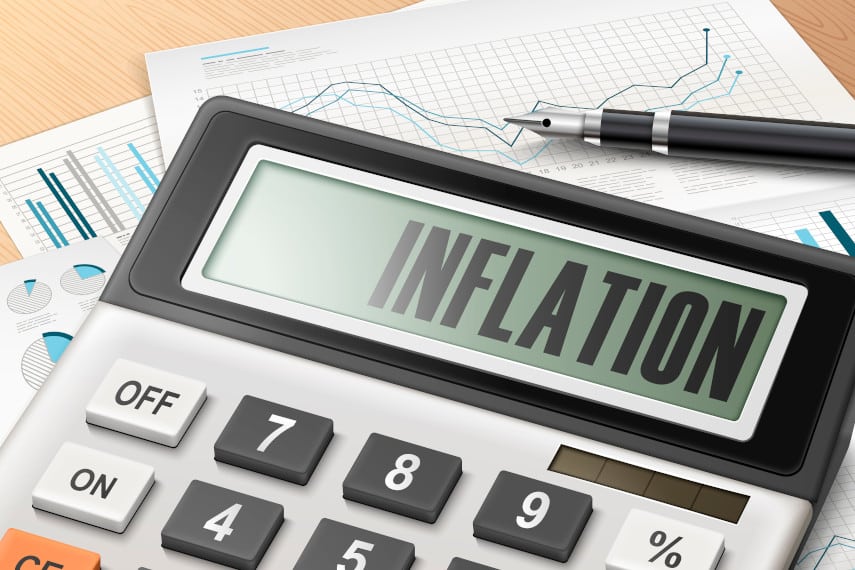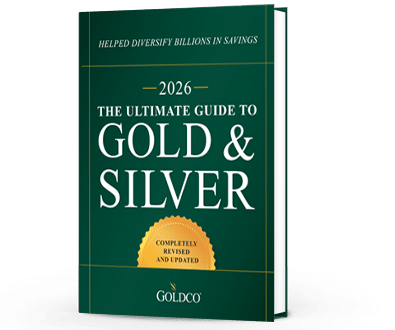6 Indicators of a Potential Recession
It seems that in the media today there are more and more mentions of the dreaded R-word: recession With growing economic uncertainty, the threat of potential recession seems to be growing as...
Economy

In our modern society, many people take inflation for granted. They assume that it’s endogenous to the system, a natural part of market activity. And most investors probably believe that inflation is something that just happens, often for no rhyme or reason. Those beliefs are incorrect, and failing to invest with a proper understanding of inflation could cost those investors dearly.
The reality is that, like Milton Friedman famously said, inflation is always and everywhere a monetary phenomenon. The history of prices from the 19th century until 1913 was one of slow and gentle declines, as increased industrial production led to more goods becoming available at lower prices. But since the creation of the Federal Reserve System in 1913, inflation has become the norm. We now expect prices to rise in the future without end.
Every now and then, however, inflation gets so bad that everyone has to sit up and take notice. For the past 15-20 years, inflation rates have been relatively low, allowing many people to ignore inflation and its pernicious effects in raising our cost of living. But all of a sudden, prices seem to have exploded upward, out of nowhere. From food to cars to houses, the cost of everything is rising.
There’s a very real possibility that this rising inflation could give way to stagflation, just like we saw during the 1970s. That double whammy of high inflation and high unemployment could wreak havoc not only on the economy, but also on the financial well-being of millions of Americans. How would your retirement savings fare if stagflation returns?
The cause of inflation is the continued creation of money by the Federal Reserve System. The Fed is a one-trick pony, as its response to every potential crisis is some variant of money creation. Sometimes that comes in the form of lowering the target federal funds rate, which requires open market operations. Other times it’s in the form of quantitative easing, buying massive amounts of assets with money created out of thin air.
All this money creation has, over time, resulted in a significant increase in the price level. And that problem has gotten even worse since last year.
The Fed’s balance sheet was already bloated last spring, at $4 trillion. But once the federal government embarked on its fiscal stimulus, the Fed aided and abetted that by monetizing much of that debt and adding it to its balance sheet. Now the Fed’s balance sheet has doubled, to over $8 trillion, and it’s still climbing.
The result of all of that money creation is a rise in prices throughout the economy that has many Americans wondering how they’re going to sustain their current standard of living. Between rising food prices, rising housing prices, shortages of major consumer goods, and rising energy prices, households are getting squeezed everywhere they turn. And with wages not rising nearly as fast as prices, many households are between a rock and a hard place.
Of course, those still in the workforce are the lucky ones. Millions of Americans remain unemployed, and labor shortages are plaguing many industries. Even offering higher wages and bonuses isn’t doing anything to attract employees back to the workforce.
With shortages of labor, computer chips, and raw materials, even those who are still employed could see their hours cut or could face potential furloughs. Last year’s COVID lockdowns wreaked havoc on supply chains and the just in time inventory system, and industry still hasn’t recovered.
The headwinds pushing against the economy and the labor market are only getting stronger, and more and more analysts, professional investors, and economists are warning about the potential for stagflation. We could be facing at least a few years of stagflation, if not more, and the 2020s could end up looking a lot like the 1970s.
One of the perverse aspects of inflation is that it disincentivizes savings and investment. After all, if prices are constantly rising, there is relentless pressure to buy things before the price rises even further. So consumption replaces saving.
That’s exacerbated when investment returns are paltry, which for many Americans they have been for the past decade or more. Given the choice between investing money and fighting for every penny of gains, or buying goods in order to get them 5% cheaper than they’ll be a year from now, many people will take the latter.
The 1970s stagflation saw just that type of environment, with high inflation that reached double digits twice within the decade. Meanwhile, stock markets remained stagnant, frustrating investors who were hoping to stay ahead of inflation. If the 2020s return to that type of pattern, it could end up being a very frustrating decade for many investors.
One group of investors who didn’t find the 1970s all that bad were precious metals investors. The 1970s saw both gold and silver average over 30% annualized increases over the course of the decade. Gold rose about 14-fold, while silver rose nearly 18-fold. Both of those increases blew stock markets out of the water, and also were significantly higher than the inflation rate.
Gold and silver have a tendency to deliver that kind of performance during times of weak economic growth and high inflation. In the aftermath of the 2008 crisis, for instance, gold nearly tripled in price while silver more than quintupled. And if the 2020s end up being a decade of stagflation, gold and silver could see significant price increases in the coming years.
But protecting your retirement savings means taking action before the economy begins its downturn. Once everyone has started heading for the exits, it becomes much more difficult to transition out of mainstream financial assets and into alternative assets such as precious metals.
Thankfully, the precious metals experts at Goldco have over a decade of experience helping thousands of customers just like you protect their retirement savings with gold and silver. With products ranging from a gold IRA to direct purchases and delivery of gold and silver coins and bars, Goldco offers a range of products and services to suit every customer.
If you’re worried about the potential for stagflation and are looking to find out more information about how gold and silver could help protect you, give Goldco a call today. Don’t let your hard-earned savings fall victim to the ravages of inflation.

